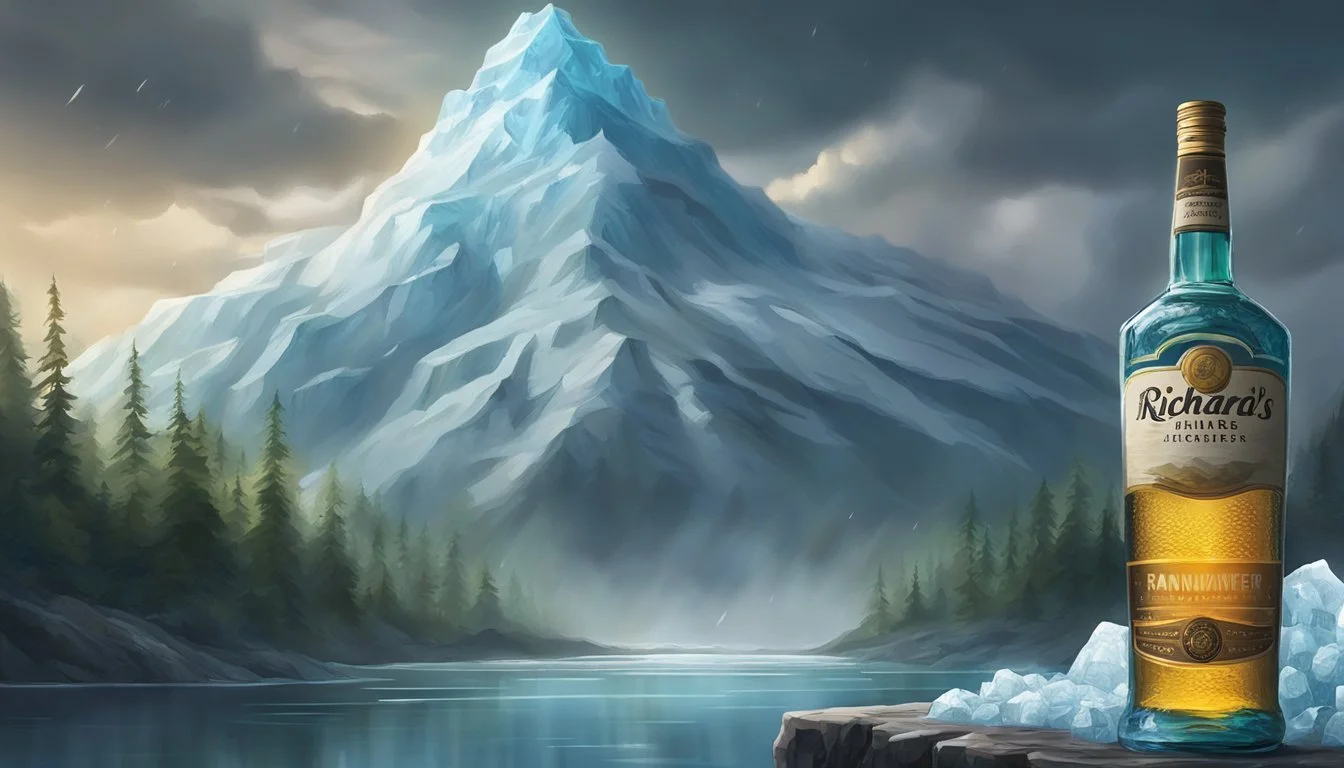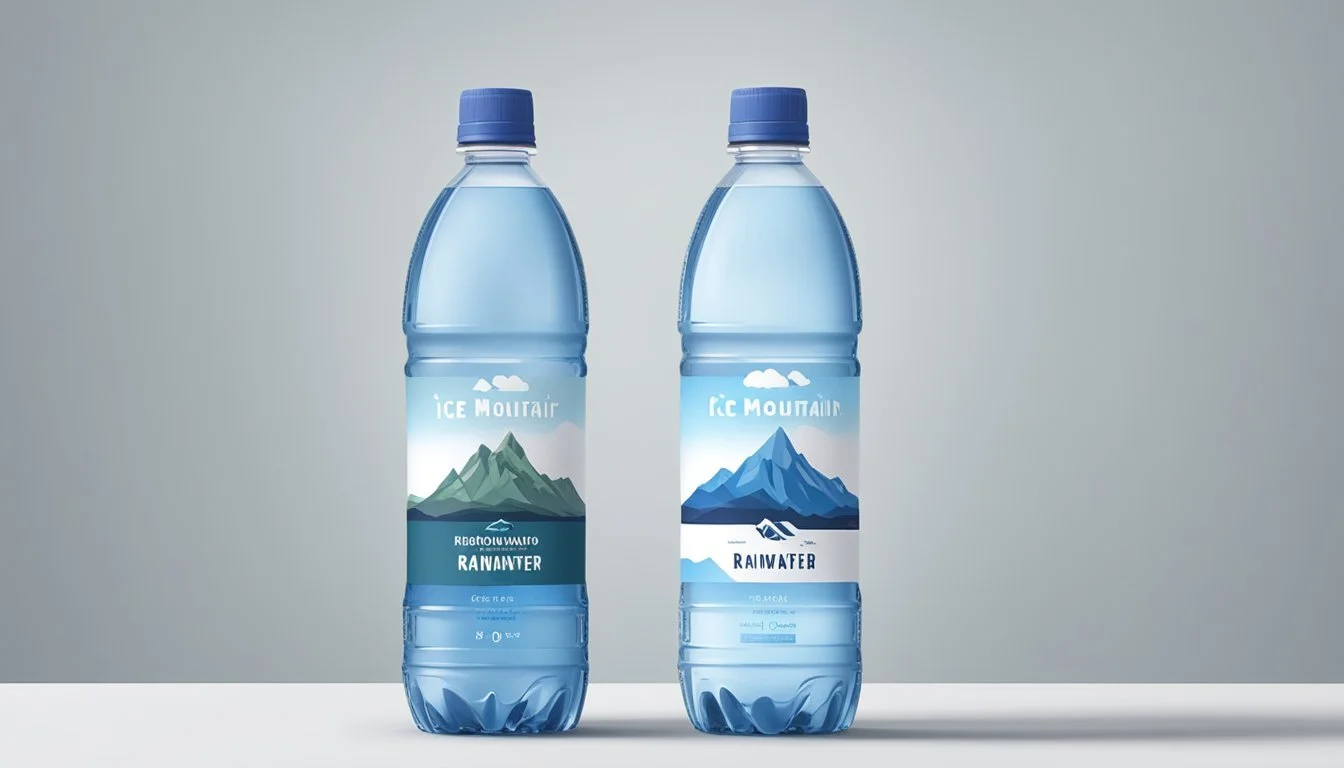Ice Mountain vs. Richard’s Rainwater
Best Choice for Bottled Water
Choosing the right bottled water can be more complicated than just picking it off the shelf. In the debate between Ice Mountain and Richard’s Rainwater, consumers often look for factors such as taste, production process, and purity. Ice Mountain is renowned for its multi-step filtration process and its clean, crisp taste derived from natural springs.
Richard’s Rainwater, on the other hand, offers something unique by capturing and bottling rainwater. This method can appeal to environmentally conscious consumers who appreciate sustainable practices. Richard’s Rainwater uses a rigorous purification process, making it a top choice for those prioritizing purity and sustainability.
Ultimately, both brands provide high-quality water, but they cater to different preferences and values. While Ice Mountain impresses with its traditional, spring-sourced method and reliable taste, Richard’s Rainwater stands out for its innovative approach and commitment to eco-friendliness.
The Essentials of Bottled Water
Bottled water is a staple product for many, offering convenience and perceived purity.
The primary types of bottled water include spring water, mineral water, purified water, and rainwater. Each has different sources and treatment processes, impacting taste and quality.
Spring Water: Typically sourced from underground springs, it undergoes minimal processing to maintain natural minerals.
Mineral Water: Rich in minerals like calcium and magnesium, mineral water is believed to offer added health benefits.
Purified Water: Subjected to stringent purification processes such as reverse osmosis, this type ensures high purity levels.
Rainwater: Companies like Richard’s Rainwater gather and bottle rain before it contacts the ground, preserving its natural purity.
Quality and Standards
Bottled water quality is strictly regulated to ensure safety and purity. Standards set by agencies like the FDA in the United States dictate acceptable levels of contaminants.
Testing methods include:
Microbiological testing: Ensures no harmful bacteria.
Chemical analysis: Checks for toxins like lead or chlorine.
Benefits of Bottled Water
Convenience: Easily accessible and portable.
Purity: Often filtered to remove contaminants not eliminated by municipal water systems.
Taste: Unique mineral content can enhance taste.
Comparing Ice Mountain and Richard’s Rainwater
Ice Mountain: Sourced from natural springs, it maintains a consistent mineral content.
Richard’s Rainwater: Captured and bottled directly from rainfall, touted for its ultra-purity.
Choosing the Right Bottled Water
Consider factors like source, treatment process, and intended use. Whether seeking a refreshing drink or guaranteed purity, understanding these essentials helps in making an informed choice.
Environmental Impact of Bottling
Bottled water contributes significantly to environmental concerns. The production of plastic bottles for water is particularly problematic. It generates considerable CO2 emissions, with estimates showing between 1.6 and 22 oz of CO2 released per 50 oz of bottled water produced.
Richard’s Rainwater offers a unique approach by bottling rainwater, which can alleviate some environmental stress by capturing and utilizing naturally occurring water. Using glass bottles reduces plastic waste but involves energy-intensive processes for both production and recycling.
Ice Mountain, like many other brands, predominantly uses plastic bottles, which have a higher carbon footprint. Switching to aluminum cans could be a more sustainable option, as aluminum is more recyclable than plastic.
Packaging choices heavily influence the environmental footprint. While plastic is lightweight and convenient, its environmental toll is significant due to its low recycling rates and long decomposition time. Conversely, glass and aluminum are more sustainable options but come with their own production energy costs.
Moreover, the transportation of bottled water adds to the carbon footprint. Local sourcing, as Richard's Rainwater promotes, can reduce transportation emissions, whereas brands sourcing water from distant locations contribute more CO2.
Consumer habits also play a role. Widespread use of bottled water amplifies these environmental impacts. Encouraging the use of reusable bottles and improving trust in public water systems can help reduce reliance on single-use packaging.
Addressing the environmental impact of bottling involves considering these factors carefully and making informed choices about packaging and consumption.
Source and Sustainability
Ice Mountain and Richard’s Rainwater differ significantly in their water sources and approaches to sustainability, reflecting their unique operational practices and environmental impacts.
Harvesting the Rainwater
Richard's Rainwater utilizes a renewable water source by capturing and purifying rainwater.
This method reduces reliance on groundwater resources. Rainwater harvesting involves collecting rain from catchment areas, filtering out impurities, and then storing it in sanitized containers.
The company's approach minimizes environmental impact and preserves natural water cycles.
Using rainwater can also reduce energy consumption and emissions related to water treatment.
Rainwater's natural recharging process ensures sustainability, making it an eco-friendly alternative to conventional bottled water sources.
Tapping the Springs
Ice Mountain sources its water from multiple groundwater springs in the Midwest United States.
This spring water is often praised for its clean taste and balanced mineral content, which includes calcium, magnesium, and sodium.
While the water is naturally filtered through geological formations, the extraction process can impact local ecosystems and water tables.
Additionally, Ice Mountain's use of plastic bottles, derived from petrochemicals, raises concerns about environmental sustainability and recycling rates.
Efforts to improve bottle recyclability and sourcing transparency are ongoing, reflecting a commitment to more sustainable practices even within traditional spring water harvesting methodologies.
Filtration and Purity
Ice Mountain and Richard’s Rainwater both prioritize clean water through advanced filtration systems.
Ice Mountain undergoes multiple stages of filtration, ensuring it meets the standards set by the FDA and IBWA. This process includes reverse osmosis and microfiltration to remove contaminants.
Ice Mountain also eliminates chlorine, resulting in a pure, chlorine-free product.
Richard’s Rainwater is sourced from rainwater and goes through a distinct filtration process. They utilize carbon filtration, which effectively removes impurities and enhances water taste.
Rainwater is collected away from pollutants, filtered, and checked regularly for purity.
Criteria Ice Mountain Richard’s Rainwater Filtration System Multi-stage (including reverse osmosis) Carbon filtration Source Groundwater Rainwater Chlorine-Free Yes Yes Compliance FDA, IBWA standards Regular purity checks
Both brands aim to provide safe, clean water using robust filtration techniques, ensuring high purity and a pleasant taste.
Flavor Profile and Water Quality
When comparing Ice Mountain and Richard’s Rainwater, both brands offer distinct flavor profiles influenced by their sources and treatment processes.
Ice Mountain is known for its refreshing taste, attributed to the presence of natural minerals. These minerals, including calcium and magnesium, come from the spring sources of the water. They add subtle nuances to its flavor, making it appealing to many consumers.
Richard's Rainwater, collected from rain, undergoes a rigorous filtration process to ensure purity. The taste is often described as clean and pure, with a smooth finish. Due to its lack of mineral content, there is a noticeable softness on the palate.
Water Quality:
Ice Mountain employs a multi-step filtration process, including screening and filtration, to remove large particles and impurities. This ensures a high standard of water purity while retaining beneficial minerals.
Richard's Rainwater uses advanced filtration and purification techniques to deliver water free from contaminants. Since the source is rainwater, it naturally contains fewer minerals compared to spring water.
Fluoride and Minerals:
Ice Mountain contains trace amounts of naturally occurring fluoride and minerals due to its spring source.
Richard’s Rainwater lacks fluoride and has minimal mineral content, appealing to those preferring pure, soft water without added elements.
In summary, those who prefer a mineral-rich taste with a hint of natural sweetness may opt for Ice Mountain. Conversely, those seeking a cleaner, softer flavor with minimal mineral content might prefer Richard's Rainwater. Both options ensure high-quality water through rigorous purification processes, catering to different taste preferences.
Packaging and Accessibility
Both Ice Mountain and Richard’s Rainwater offer distinct approaches to packaging and regional availability, which can influence consumer choice.
Bottling in Plastic and Glass
Ice Mountain employs 100% plastic bottles, which are widely recyclable but heavily reliant on petrochemicals. These bottles are available nationwide, with a strong presence in the Midwest, making them easily accessible.
Richard’s Rainwater, on the other hand, focuses on more eco-friendly solutions. It utilizes glass bottles as part of its commitment to sustainability and reducing plastic waste. This option aligns with zero-waste initiatives, though the availability might be regionally limited.
The Rise of Aluminum Cans
Richard’s Rainwater is pioneering the use of aluminum cans for bottled water, an option that boasts higher recyclability rates compared to plastic. These cans also help in minimizing the environmental footprint.
Ice Mountain has not yet adopted aluminum cans widely, sticking with plastic due to its cost-effectiveness and established recycling avenues. Richard’s move towards aluminum aligns with growing consumer demand for sustainable packaging.
Market Presence and Availability
Ice Mountain is widely available across the Midwest, thanks to its strong regional distribution network. It is frequently stocked in major grocery chains such as Kroger and Albertsons. This broad availability makes it an accessible choice for consumers in that region.
Richard's Rainwater operates on a more niche scale, often associated with eco-conscious markets. Whole Foods and Sprouts are known to carry this brand, reflecting its appeal to environmentally-minded shoppers. Distribution is particularly strong in cities like Austin and New Orleans, where sustainability practices are highly valued.
Availability Summary
Brand Primary Markets Availability in Major Chains Ice Mountain Midwest Kroger, Albertsons Richard’s Rainwater Eco-conscious areas Whole Foods, Sprouts
Sales Reach
Ice Mountain benefits from the large volume of sales driven by its presence in mainstream grocery stores. Its economic pricing and wide availability contribute to consistent sales, especially in its primary market.
Richard's Rainwater, though not as widely distributed, carves out a loyal customer base within eco-friendly communities. Sales tend to be strong in specialty stores and areas prioritizing sustainable products.
Community and Branding Initiatives
Ice Mountain focuses on community engagement by contributing to local initiatives. The brand collaborates with various organizations to support environmental conservation.
Richard’s Rainwater, on the other hand, has positioned itself as a sustainable alternative in the bottled water market. They emphasize eco-friendly practices and community support, including partnerships with initiatives like Tank Town and investments in local water projects.
Branding plays a big role for both companies. Ice Mountain often highlights the natural purity of its spring water through its marketing campaigns. The company uses traditional advertising methods and sponsorship of community events.
Richard’s Rainwater utilizes a unique narrative by emphasizing that every drop is sourced from rain, avoiding groundwater depletion. Their branding campaigns focus on sustainability and the innovative process of collecting rainwater.
Made by the Water, LLC, the parent company of Richard’s Rainwater, actively engages with communities by donating water during natural disasters and sponsoring local events. They are transparent about their water collection and purification processes, which reinforces their commitment to quality and sustainability.
In contrast, Ice Mountain uses Lazy Magnolia’s partnerships in local promotional activities, enhancing brand visibility and community ties. Their efforts include organizing clean-up drives and educational sessions about water conservation.
Both companies clearly prioritize community engagement and branding but in different ways. Ice Mountain builds on its traditional roots and widespread recognition, while Richard’s Rainwater leans heavily into sustainable practices and innovative marketing to carve out its niche.
The Future of Drinking Water
The future of drinking water pivots significantly towards sustainability and environmental impact. Companies are increasingly focusing on water sourced from renewable sources. Richard's Rainwater is an example, collecting and bottling rainwater, which is a renewable resource. This approach promises a sustainable and continuous supply.
Net-positive water strategies are another emerging trend. Businesses aim to replenish more water than they consume, creating a net-positive impact. By investing in water restoration projects and improving water-use efficiency, these companies contribute positively to the water cycle.
Technological advancements play a crucial role. Innovations in filtration and purification techniques ensure cleaner, safer water. This includes advanced reverse osmosis systems and UV light purification, which eliminates contaminants without introducing chemicals.
Consumers are also driving change. There is a growing preference for brands that prioritize environmental stewardship and sustainable sourcing. Packaging innovations, such as biodegradable bottles and reduced plastic usage, are becoming more popular, influenced by consumer demand.
Increased awareness around water scarcity prompts action. More regions are adopting policies that encourage efficient water use and protect natural water sources. Governments and organizations collaborate to ensure the longevity of water supplies.
Lastly, climate change's unpredictability affects water availability. Adopting adaptable, resilient water management practices is critical. This includes using rainwater harvesting, greywater systems, and desalination to mitigate shortages.
As these practices become widespread, the future of drinking water looks promising, emphasizing renewable sourcing and net-positive impacts. This will ensure the availability of clean drinking water while protecting the planet.
Conclusion
Ice Mountain and Richard’s Rainwater both offer distinct benefits to consumers. Ice Mountain sources its water from several Midwest springs and uses a multi-step filtration process to ensure purity. This makes it a reliable choice for those who prioritize natural composition.
Richard’s Rainwater, on the other hand, stands out for its innovative approach of bottling rainwater. This method emphasizes sustainability and uniqueness, making it attractive to environmentally conscious consumers. The rainwater is collected and filtered to make it potable, ensuring a clean and refreshing taste.
Taste and Quality:
Ice Mountain: Known for its crisp, clean taste derived from natural springs.
Richard’s Rainwater: Offers a fresh, unique flavor from purified rainwater.
Filtration Process:
Ice Mountain: Multi-step filtration, including screening to remove large particles.
Richard’s Rainwater: Collects and purifies rainwater for human consumption.
Sustainability:
Ice Mountain: Focuses on natural spring sources.
Richard’s Rainwater: Emphasizes collection of rainwater, promoting environmental sustainability.
Both brands take notable steps to ensure their water is of high quality and safe for consumption. The choice ultimately depends on individual preferences regarding taste, source, and environmental impact.
More About Ice Mountain
Core Hydration vs Ice Mountain: Which Bottled Water is Better?
Ice Mountain vs Aqua Carpatica: Which Bottled Water is Better?
Ice Mountain vs Cascade Mountain: Which Bottled Water is Better?
Ice Mountain vs Crystal Geyser: Which Bottled Water is Better?
Ice Mountain vs Crystal Lake: Which Bottled Water is Better?
Ice Mountain vs Essence pH10: Which Bottled Water is Better?
Ice Mountain vs Hawaii Volcanic: Which Bottled Water is Better?
Ice Mountain vs Hawaiian Springs: Which Bottled Water is Better?
Ice Mountain vs Icelandic Glacial: Which Bottled Water is Better?
Ice Mountain vs Kirkland Signature: Which Bottled Water is Better?
Ice Mountain vs Liquid Death: Which Bottled Water is Better?
Ice Mountain vs Mountain Valley Spring Water: Which Bottled Water is Better?
Ice Mountain vs Nestle Pure Life: Which Bottled Water is Better?
Ice Mountain vs Poland Spring: Which Bottled Water is Better?
Ice Mountain vs Proud Source: Which Bottled Water is Better?
Ice Mountain vs Purely Sedona: Which Bottled Water is Better?
Ice Mountain vs San Pellegrino: Which Bottled Water is Better?
Ice Mountain vs Simple Truth: Which Bottled Water is Better?
Ice Mountain vs Solan de Cabras: Which Bottled Water is Better?
Ice Mountain vs Talking Rain AQA: Which Bottled Water is Better?
Ice Mountain vs Whole Foods 365: Which Bottled Water is Better?
Ice Mountain vs Whole Foods Italian Still Mineral water: Which Bottled Water is Better?
More About Richard’s Rainwater
Acqua Pana vs Richard's Rainwater: Which Bottled Water is Better?
Alkaline88 vs Richard's Rainwater: Which Bottled Water is Better?
Antipodes vs Richard's Rainwater: Which Bottled Water is Better?
Aqua Carpatica vs Richard's Rainwater: Which Bottled Water is Better?
Aquafina vs Richard's Rainwater: Which Bottled Water is Better?
Arrowhead vs Richard's Rainwater: Which Bottled Water is Better?
Boxed Water vs Richard's Rainwater: Which Bottled Water is Better?
Cascade Mountain vs Richard's Rainwater: Which Bottled Water is Better?
Castle Rock vs Richard's Rainwater: Which Bottled Water is Better?
Cirro vs Richard's Rainwater: Which Bottled Water is Better?
Richard's Rainwater vs HFactor: Which Bottled Water is Better?
Core Hydration vs Richard's Rainwater: Which Bottled Water is Better?
Crystal Geyser vs Richard's Rainwater: Which Bottled Water is Better?
Deer Park vs Richard's Rainwater: Which Bottled Water is Better?
Erewhon vs Richard's Rainwater: Which Bottled Water is Better?
Essentia vs Richard's Rainwater: Which Bottled Water is Better?
Eternal vs Richard's Rainwater: Which Bottled Water is Better?
Ethos vs Richard's Rainwater: Which Bottled Water is Better?
Evian vs Richard's Rainwater: Which Bottled Water is Better?
Hawaii Volcanic vs Richard's Rainwater: Which Bottled Water is Better?
Hawaiian Springs vs Richard's Rainwater: Which Bottled Water is Better?
Icelandic Glacial vs Richard's Rainwater: Which Bottled Water is Better?
Just Water vs Richard's Rainwater: Which Bottled Water is Better?
Kroger vs Richard's Rainwater: Which Bottled Water is Better?
LIFEWTR vs Richard's Rainwater: Which Bottled Water is Better?
Liquid Death vs Richard's Rainwater: Which Bottled Water is Better?
Mananalu vs Richard's Rainwater: Which Bottled Water is Better?
Mountain Valley Spring Water vs Richard's Rainwater: Which Bottled Water is Better?
Nestle Pure Life vs Richard's Rainwater: Which Bottled Water is Better?
Origin vs Richard's Rainwater: Which Bottled Water is Better?
Ozarka vs Richard's Rainwater: Which Bottled Water is Better?
Penta vs Richard's Rainwater: Which Bottled Water is Better?
Perrier vs Richard's Rainwater: Which Bottled Water is Better?
Poland Spring vs Richard's Rainwater: Which Bottled Water is Better?
Purely Sedona vs Richard's Rainwater: Which Bottled Water is Better?
Richard's Rainwater vs 1907water: Which Bottled Water is Better?
Richard's Rainwater vs 7-Select: Which Bottled Water is Better?
Richard's Rainwater vs Action: Which Bottled Water is Better?
Richard's Rainwater vs Big Chill: Which Bottled Water is Better?
Richard's Rainwater vs Big Win: Which Bottled Water is Better?
Richard's Rainwater vs BodyArmor: Which Bottled Water is Better?
Richard's Rainwater vs CBD Living: Which Bottled Water is Better?
Richard's Rainwater vs Crystal Lake: Which Bottled Water is Better?
Richard's Rainwater vs Dasani: Which Bottled Water is Better?
Richard's Rainwater vs Essence pH10: Which Bottled Water is Better?
Richard's Rainwater vs Kirkland Signature: Which Bottled Water is Better?
Richard's Rainwater vs Open Water: Which Bottled Water is Better?
Richard's Rainwater vs Ophora: Which Bottled Water is Better?
Richard's Rainwater vs Proud Source: Which Bottled Water is Better?
Richard's Rainwater vs Pure Life: Which Bottled Water is Better?
Richard's Rainwater vs Ramona: Which Bottled Water is Better?
Richard's Rainwater vs Refreshe: Which Bottled Water is Better?
Richard's Rainwater vs Simple Truth: Which Bottled Water is Better?
Richard's Rainwater vs Skyra: Which Bottled Water is Better?
Richard's Rainwater vs Talking Rain AQA: Which Bottled Water is Better?
Richard's Rainwater vs The Well: Which Bottled Water is Better?
Richard's Rainwater vs Weird Water: Which Bottled Water is Better?
Richard's Rainwater vs Whole Foods 365: Which Bottled Water is Better?
Richard's Rainwater vs Zenwtr: Which Bottled Water is Better?
San Pellegrino vs Richard's Rainwater: Which Bottled Water is Better?
Smartwater vs Richard's Rainwater: Which Bottled Water is Better?
Solan de Cabras vs Richard's Rainwater: Which Bottled Water is Better?
Starkey vs Richard's Rainwater: Which Bottled Water is Better?
Tahoe vs Richard's Rainwater: Which Bottled Water is Better?
Topo Chico vs Richard's Rainwater: Which Bottled Water is Better?
Tru Alka vs Richard's Rainwater: Which Bottled Water is Better?
Volvic vs Richard's Rainwater: Which Bottled Water is Better?
Waiakea vs Richard's Rainwater: Which Bottled Water is Better?
Whole Foods Italian Still Mineral water vs Richard's Rainwater: Which Bottled Water is Better?
Zephyrhills vs Richard's Rainwater: Which Bottled Water is Better?






